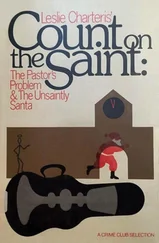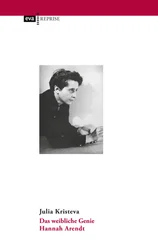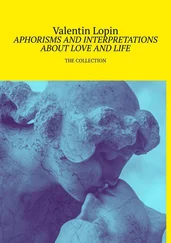24. Critique, CW 3:357.
25. Socrates: 460–399 B.C.E.
26. Plato: ca. 428–ca. 347 B.C.E.
27. Michel de Montaigne, The Essays: A Selection , trans. and ed. M. A. Screech (London: Penguin, 2004), book 2:12, 590: “I find it unacceptable that the power of God should be limited in this way by the rules of human language.”
28. René Descartes, Discourse on Method (1637).
29. Arthur Rimbaud: 1854–1891.
30. Baruch Spinoza: 1633–1677.
31. G. W. Leibniz, Discourse on Metaphysics and Related Writings , ed. and trans. R. N. D. Martin and Stuart Brown (Manchester: Manchester University Press, 1988), 77.
32. Letter from Leibniz to André Morell (1696), translated from French by Lloyd Strickland (2007), www.leibniz-translations.com/morell1696.htm. [It quotes as its source the following: G. W. Leibniz, Sämtliche schriften und briefe series I , ed. Deutsche Akademie der Wissenschaften, 13:398. This book seems to be in German, with only excerpts translated.] Cf. M. Leroy, Discours de métaphysique et correspondance avec Arnaud de G. W. Leibniz , (Paris: Grua/Presses Universitaires de France, 1948), 103.
33. Cf. J. K. Huysmans, En Route (Sawtry, U.K.: Dedalus, 2002), 221: “the virile soul of a monk.”
34. John of the Cross: 1542–1591.
2. MYSTICAL SEDUCTION
1. Julia Kristeva, “Le bonheur des Béguines,” in Le jardin clos de l’âme. L’imaginaire des religieuses dans les Pays-Bas du Sud depuis le XIII esiècle , ed. Paul Vanderbroeck (Brussels: Société des expositions, Palais des Beaux-Arts, February — May 1994).
2. See Gershom Scholem, Major Trends in Jewish Mysticism , 3rd ed. (New York: Schocken, 1995); Zohar: The Book of Splendor (New York: Schocken, 1995).
3. See Émile Boutroux, “Le mysticisme,” Bulletin de l’institut général psychologique , 31 (1902); André Lalande, Vocabulaire technique et critique de la philosophie , ed. Félix Alcan (Paris: Presses Universitaires de France, 1926), 496.
4. Jacques Lacan, Écrits , trans. Bruce Fink (New York: Norton, 2006).
5. Denys the Areopagite (or Pseudo-Dionysius), Complete Works , trans. Colm Luibheid and Paul Rorem (Mahwah, N.J.: Paulist, 1987).
6. Plotinus: 204/5–270.
7. Aristotle: 384–322 B.C.E.
8. Exod. 3:1–6.
9. Ezek. 10:1–22.
10. Sefer Yetzirah , short treatise of some 1,600 words, third to twelfth century.
11. Judah Halevi: 1075–1141.
12. Moses Maimonides: 1135–1204.
13. Saadia ben Joseph of Fayum: 882–942. Author of Commentary on Sefer Yetzira, ca. 931.
14. Solomon Ibn Gabirol: 1020–1058.
15. Plato: 428–348 B.C.E.
16. Philo of Alexandria: ca. 10–45 B.C.E.
17. Bahya Ibn Paquda: tenth or eleventh century.
18. Abraham Abulafia: 1240–1291.
19. Moisés de León: second half of the thirteenth century.
20. Cf. André Néher, “La philosophie juive médiévale,” in Histoire de la philosophie , ed. Y. Belaval (Paris: Gallimard, Pléiade Collection, 1969).
21. Le Zohar , trans. Jean de Pauly (Paris: Ernest Leroux, 1908); The Zohar , ed. H. Sperling and M. Simon, 5 vols. (London: Soncino, 1949).
22. Cf. Julia Kristeva, Time and Sense: Proust and the Experience of Literature , trans. Ross Guberman (New York: Columbia University Press, 1998), 148–9, 325.
23. Louis Massignon, Al Hallaj: Mystic and Martyr , trans. Herbert Mason (Princeton: Princeton University Press, 1994); Anne-Marie Schimmel, Mystical Dimensions of Islam (Chapel Hill: University of North Carolina Press, 1978).
24. Ibn al-Arabi: d. 1240 in Damascus.
25. Ibn al-Farid: d. 1235.
26. Jalal al-Din Rumi: d. 1273.
27. Al-Ghazali: 1058–1111.
28. Al-Hallaj: 857–922.
29. Cf. Noël J. Coulson, A History of Islamic Law (Edinburgh: Edinburgh University Press, 1964).
30. Al-Kindi: 800–873.
31. Albert the Great: 1200–1280.
32. Origen: 185–253.
33. Gregory of Nyssa: 335–394.
34. De Certeau, The Mystic Fable : “Since the thirteenth century (courtly love, etc.), a gradual religious demythification seems to be accompanied by a progressive mythification of love. The One has changed its site. It is no longer God but the other, and in a masculine literature, woman” (4); “for reasons that need clarifying, the woman’s experience held up better against the cluttered ruins of symbolic systems, which were theological and masculine, and which thought of presence as the coming of a Logos” (6).
35. Thomas Aquinas: 1225–1274.
36. Jan van Ruysbroek: 1293–1381.
37. Hadewijch of Antwerp: ca. 1200–1260.
38. Ps. 42:7: “Deep calleth unto deep.”
39. Homo quidam nobilis : “A certain nobleman went into a far country to receive for himself a kingdom, and to return” (Luke 19:12), commented on by Meister Eckhart, Von dem edeln Menschen . See The Complete Mystical Works of Meister Eckhart , trans. and ed. Maurice O’C. Walshe (New York: Crossroad, 2009), 544; for the short quotations, 422–4, 543–4.
40. Angelus Silesius: 1624–1677.
41. Henry Suso: ca. 1296–1365.
42. Johannes Tauler: ca. 1300–1361.
43. Nicholas Krebs of Cusa: 1401–1464.
44. Jakob Böhme: 1575–1624.
45. G. W. F. Hegel: 1770–1831.
46. Angelus Silesius, Selections from The Cherubinic Wanderer, trans. J. E. Crawford Flitch (Westport, Conn.: Hyperion, 1978), 148: “ The Mystical Abandonment . Abandonment ensnareth God: / But the Abandonment supreme, / Which few there can comprehend, / Is to abandon even Him.”
47. Hildegarde of Bingen: 1098–1179.
48. Angela of Foligno: 1248–1309.
49. Catherine of Siena: 1347–1380.
50. Francis of Assisi: 1182–1226.
51. Martin Luther: 1483–1546.
52. Henri de Lubac, Corpus Mysticum: The Eucharist and the Church in the Middle Ages , trans. Gemma Simmonds et al. (London: SCM, 2006), 256: “Of the three terms: historical body, sacramental body and ecclesial body that it was a case of putting into order amongst each other, the caesura was originally placed between the first and second, whereas it subsequently came to be placed between the second and the third.”
53. Cf. de Certeau, The Mystic Fable : “After the middle of the twelfth century, the expression [ corpus mysticum ] no longer designated the Eucharist, as it had previously, but the Church. Conversely, ‘corpus verum’ no longer designated the Church but the Eucharist.…The Church, the social ‘body’ of Christ, is henceforth the (hidden) signified of a sacramental ‘body’ held to be a visible signifier…the showing of a presence beneath the ‘species’ (or appearances) of the consecrated bread and wine.…The sacrament (‘sumere Christum’) and the Church (‘sumi a Christo’) were joined…in the mode of the Church-Eucharist pair…of a visible community…and a secret action ( ergon ) or ‘mystery’…” (82–3). “The mystical term is therefore a mediating one between the historical ‘body’ that becomes ‘similar to a Code that is the law’ and the ‘mystery,’ the sacramental body…recast in the philosophical formality…as one ‘thing’ which is visible, designating another, which is invisible. The visibility of that object replaces the communal celebration, which is a community operation.…The mystical third is no more than the object of an intention. It is something that needs to be made manifest…constructed, on the basis of two clear, authoritative ‘documents’: the scriptural corpus and the Eucharistic ostension.” “A mystical Church body would have to be ‘invented,’ in the same sense in which there was to be an invention of the New World. That endeavor was the Reformation. It was gradually divided into two tendencies: one (Protestant) giving a privileged status to the scriptural corpus, the other (Catholic) to the sacrament” (84). “Furthermore, despite the ups and downs of the papal states, from the Lateran Council until the reformism following the Council of Trent (1545–1563), that pastoral (centered on the only body that could symbolize and sustain the restoration/institution of a visible Church) would have great stability.…One trait is of special interest in the question of the apparition of mystical science: the progressive concentration of these debates around seeing ” (87–9).
Читать дальше












